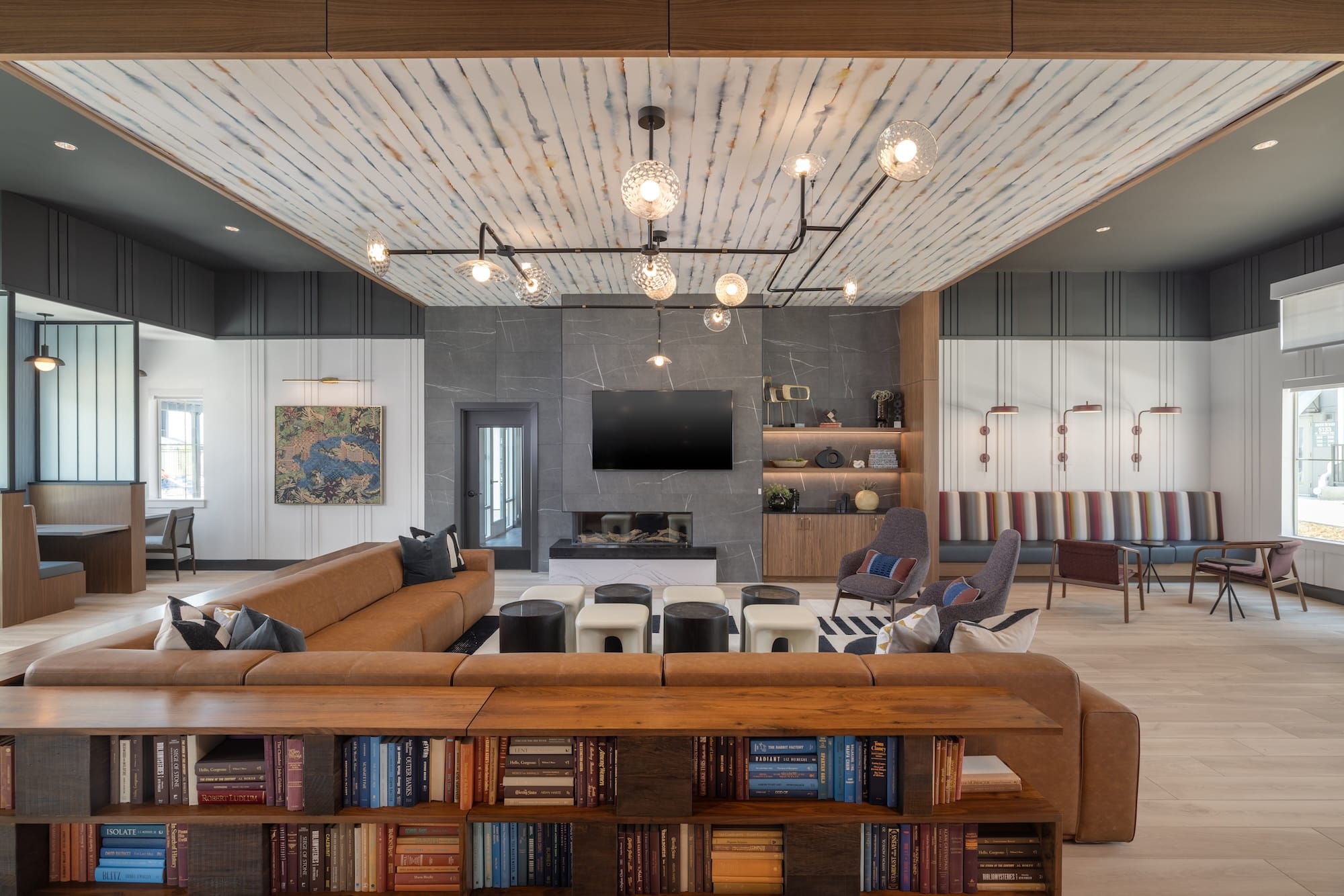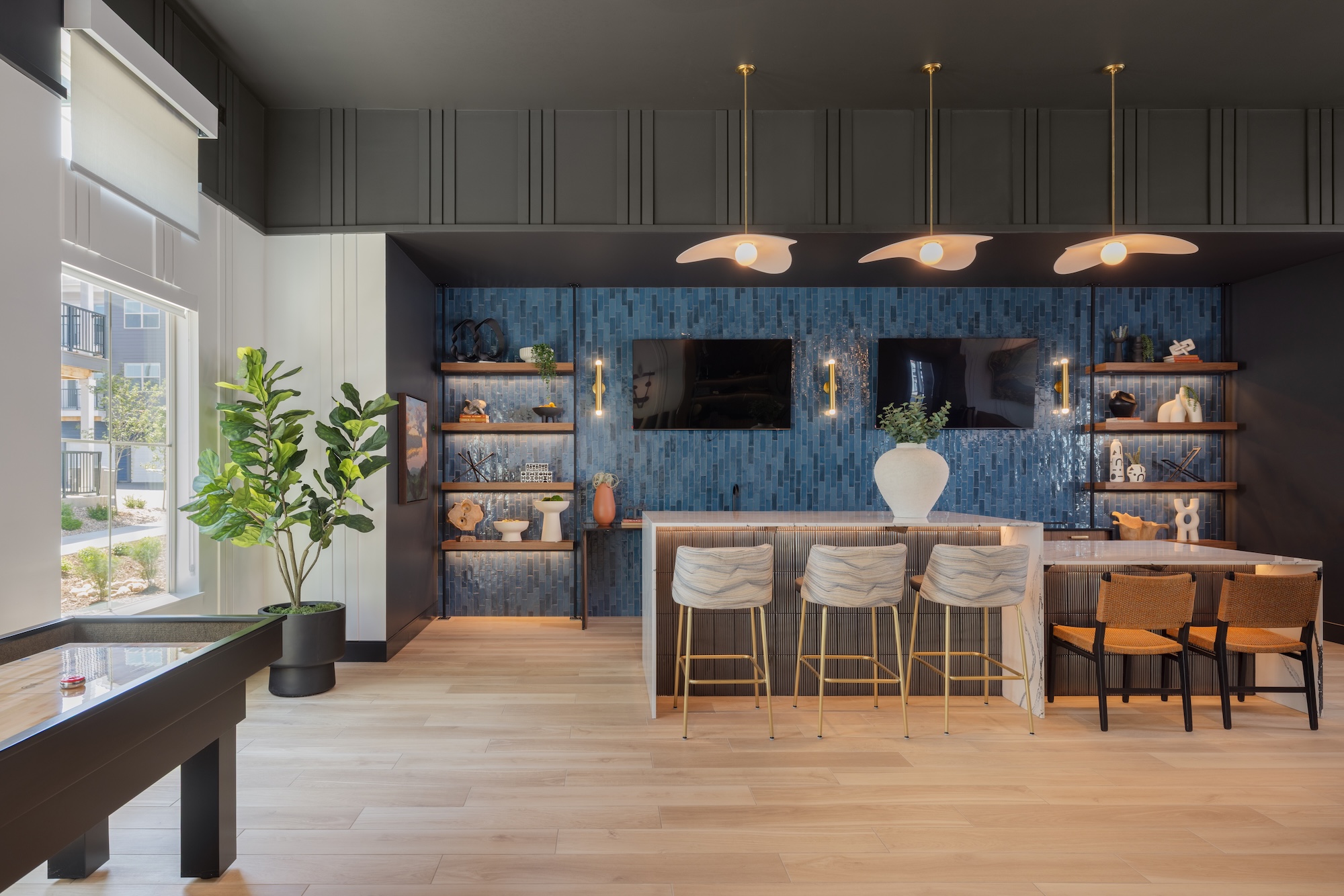Navigating Development Headwinds in Denver’s Multifamily Market: The Role of Commercial Interior Design as a Strategic Partner
Introduction
As Denver’s multifamily development sector faces unprecedented headwinds, developers are navigating a complex set of challenges—ranging from rising operational costs to stringent state regulations. These pressures, particularly around property taxes, insurance, and regulatory hurdles, are squeezing revenue streams, increasing project costs, and slowing down the pace of development. Against this backdrop, commercial interior design firms like ours have become essential partners in not just shaping the physical environment but helping projects pencil financially from concept to inception, ensuring timely and on-budget delivery.
Challenges Developers Face
To give a lay of the land, Multifamily developers in Denver are operating in an increasingly tough environment due to regulatory and financial headwinds:
- Regulatory Pressures and Tenant-Focused Laws: Recent legislative actions in Colorado, enacted to protect tenants, have inadvertently raised property owners’ bad debt while making collections more difficult. Meanwhile, escalating insurance costs and property taxes are further straining the financial models. This stands in stark contrast to the 2010-2019 period, where rent growth was high, and expense growth remained moderate. Today’s regulatory landscape is frightening away institutional investors, many of whom are pausing activity until things get better.
- The Shift to the Sunbelt: As regulations scares away capital from Colorado, more development capital is flowing into Sunbelt states where conditions are perceived to be more favorable. For interior design firms like ours, this shift presents an opportunity to showcase versatility by following clients into new markets, while maintaining Denver-area operations.
- Urban vs. Suburban Dynamics: The bifurcation between urban and suburban markets has developers rethinking strategies. In the past, efforts have focused on Urban infill developments but with these projects no longer being financially feasible the focus has shifted to the “vintage” market, renovating older properties through acquisitions, creating a value-add opportunity to keep up with the competitive landscape. In contrast, suburban areas are seeing activity from developers who have mastered cost efficiencies—particularly through vertical integration and well-managed material sourcing. This dynamic forces designers to bring a keen understanding of both markets, especially when tackling projects that balance renovation and new construction.
- Latent Defects and Construction Defect Laws: Colorado’s stringent construction defect laws further complicate the development landscape. These laws require extensive disclosure of defects, making it difficult for developers to deliver cost-effective condo projects—eliminating a key first-time homebuyer market. The burden of addressing latent defects adds pressure to development budgets and extends timelines.
- Increasing Costs and Inflation: Inflation, rising interest rates, and the increasing cost of construction materials are exacerbating the already high costs of development. Denver’s multifamily market is further strained by over-supply in areas like RiNo, Golden Triangle, and near the airport, which forces developers to pause projects, redesign them, look for cost-saving opportunities or walk away all together. This presents unique challenges for designers, who must adapt to shifting budgets, reduced scopes, and changing structural elements.
- Workforce Housing Shortage: Workforce housing is in dire need, particularly in Denver’s Mountain regions, but budget constraints are stifling development. In such projects, redesigns are common, and creative problem-solving is required to make these essential projects viable. Moreover, the Denver based relationships have played a beneficial role in being able to bring those trades to the smaller markets to save on cost of labor and materials.
The Role of Interior Design in Addressing Development Challenges
In the face of these challenges, commercial interior design firms are no longer just brought in to beautify spaces. Instead, we are becoming integral to ensuring projects remain viable, financially and logistically sound. Here’s how we contribute:
- Market Knowledge and Strategic Flexibility: As design professionals, we bring in-depth market knowledge to each project, ensuring that design decisions align with market demands. Whether its understanding tenant needs through use of space, community engagement or technology, gauging the financial viability of a design, or providing flexibility in response to shifting regulatory environments, our role has expanded beyond aesthetics. We help optimize properties to make them financially feasible by ensuring that each design element works within the broader development goals.
- Design for Financial Feasibility: With rents stagnating or even declining in some submarkets, especially in overbuilt areas, design choices must be made with an eye toward achieving rental income targets. Designers can support developers by creating spaces that enhance tenant experience and justify higher rents, all while keeping construction and operational costs in check. Whether through cost-effective FF&E selection or optimizing layout and spatial planning, the goal is always to help the developer meet financial targets.
- Holistic Project Management: Our involvement extends into construction administration, where we ensure that the project is delivered on time and within budget. With the rise in material costs and shrinking budgets, we have had to be nimble—redesigning projects mid-way to stay within financial constraints, without sacrificing quality. This requires tight coordination with contractors, developers, and other stakeholders to manage costs effectively throughout the lifecycle of the project.
- Adapting to Market Shifts: As development in Denver shifts from urban centers to suburban areas, we have adapted by working on more garden-style suburban deals. This trend reflects the growing focus on out-of-state developers who are targeting areas where regulatory and financial pressures are less intense. Here, our role becomes one of ensuring that designs resonate with local tenants while still delivering the financial outcomes developers expect.
- Creative Problem Solving: With project budgets under extreme pressure, we’ve had to get creative with redesigns, often working to narrow scopes and reduce structural costs without compromising the integrity of the project. This requires innovative approaches to materials, layouts, and even structural design to ensure the project can still meet its financial goals.
Controlling the Controllable: The Path Forward
With so many uncontrollable forces at play—interest rates, regulatory pressures, and escalating costs—developers need partners who can help them focus on what can be controlled. As designers, we contribute by:
- Offering cost-effective, value-driven design solutions that balance aesthetics with financial practicality.
- Leveraging relationships with contractors, suppliers, and municipal stakeholders to keep projects on track.
- Providing flexibility and adaptability in response to market shifts, redesign requirements, and budget constraints.
Ultimately, we’re here to help developers move forward successfully by providing a holistic, integrated approach to design that supports not only the aesthetics but also the financial and operational goals of each project.
Conclusion
Denver’s multifamily market is at a crossroads, and developers face a perfect storm of regulatory and financial headwinds. However, with the right partners—ones who can provide market insights, creative solutions, and the ability to adapt to ever-changing conditions—developers can navigate these challenges effectively. As a commercial interior design firm, we’re more than just designers; we are strategic partners in making sure projects pencil out, deliver on time, and stand out in competitive markets. By aligning design with financial goals, we contribute to the long-term viability of Denver’s multifamily sector, even in challenging times.
Table Of Content



